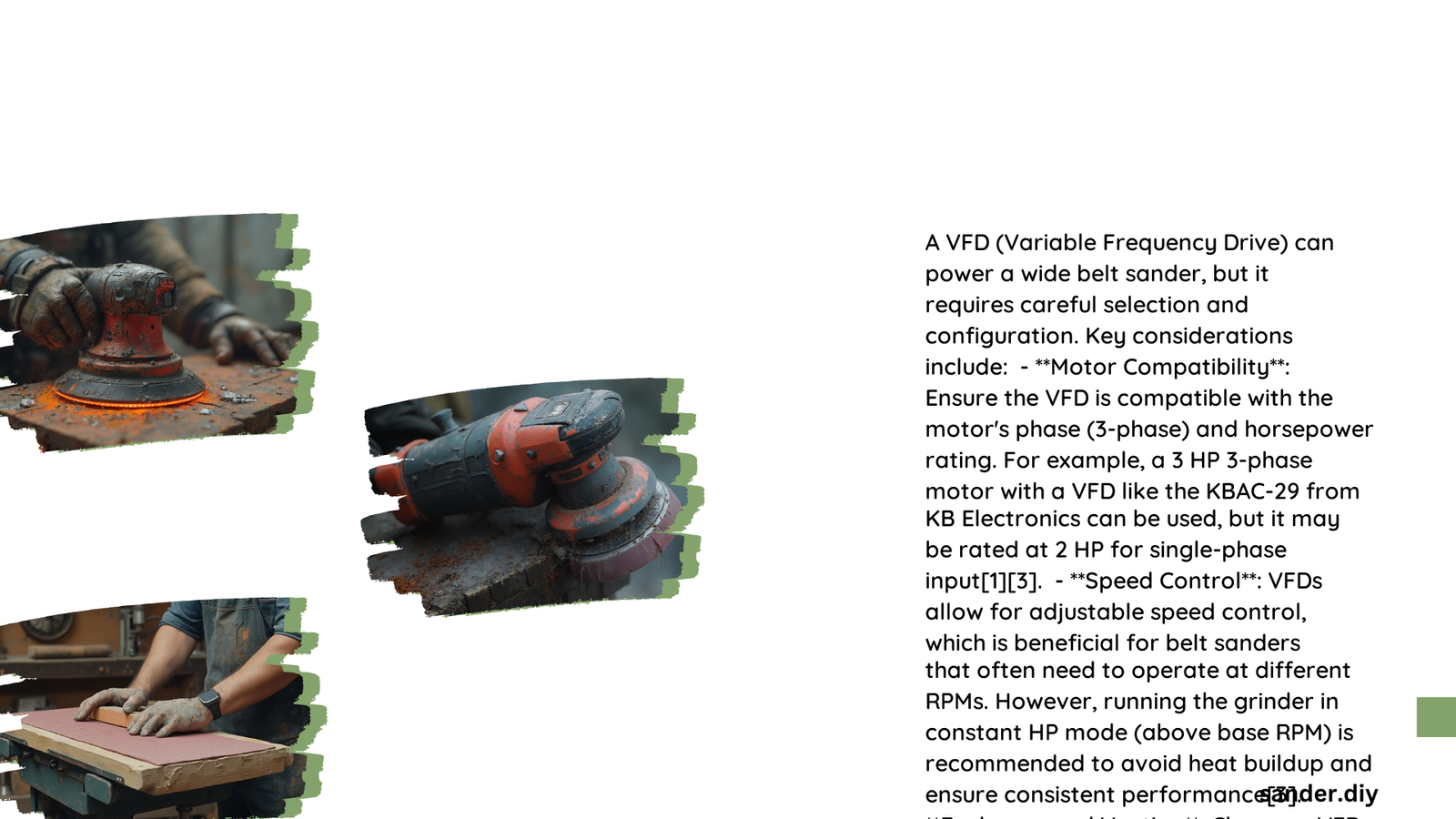Variable Frequency Drives (VFDs) offer woodworking professionals a sophisticated solution for powering wide belt sanders, enabling precise motor speed control, energy efficiency, and enhanced operational flexibility. By intelligently managing electrical frequency and voltage, VFDs can transform standard motor performance, making them a compelling technological option for demanding sanding applications across industrial and professional woodworking environments.
What Makes VFDs Suitable for Wide Belt Sanders?
Can VFDs Provide Compatible Power for Woodworking Machinery?
VFDs demonstrate remarkable compatibility with wide belt sanders through several critical technical parameters:
Motor Type Compatibility
- Induction motors
- Brushless motor configurations
- Standard three-phase electrical systems
Power Matching Considerations
| Motor Specification | VFD Requirements |
|---|---|
| Voltage Rating | Exact match needed |
| Horsepower Range | 15-40 HP typical |
| Amperage Capacity | Precise electrical load management |
How Do VFDs Control Motor Performance?
VFDs excel in providing nuanced motor control through:
- Frequency Modulation
- Adjustable RPM ranges (30-90% of base frequency)
- Precise speed regulation
-
Consistent torque maintenance
-
Operational Modes
- Constant torque settings
- Variable horsepower configurations
- Adaptive load management
What Technical Challenges Exist When Implementing VFDs?
Critical implementation considerations include:
- Installation Complexity
- Electrical infrastructure compatibility
- Thermal overload protection
-
Proper motor-drive alignment
-
Cost Implications
- Initial investment ($900-$2,000)
- Long-term energy efficiency gains
- Reduced mechanical wear
What Performance Benefits Do VFDs Offer?
Performance advantages include:
- Enhanced motor efficiency
- Reduced mechanical stress
- Improved energy consumption
- Precise speed control
- Extended equipment lifespan
How Should Professionals Select Appropriate VFDs?
Recommended selection criteria:
- Match motor horsepower exactly
- Verify voltage compatibility
- Assess operational environment
- Consider manufacturer reputation
- Evaluate maintenance requirements
Practical Implementation Strategies

Recommended VFD Configuration Steps
- Conduct comprehensive motor assessment
- Verify electrical system specifications
- Select VFD with matching parameters
- Install professional-grade thermal protection
- Implement regular maintenance protocols
Technical Limitations and Considerations
While VFDs offer substantial benefits, professionals must recognize:
- Initial higher equipment costs
- Complex installation requirements
- Potential electromagnetic interference
- Need for specialized technical knowledge
Conclusion
VFDs represent a sophisticated technological solution for powering wide belt sanders, offering unprecedented control, efficiency, and performance optimization when properly implemented.
